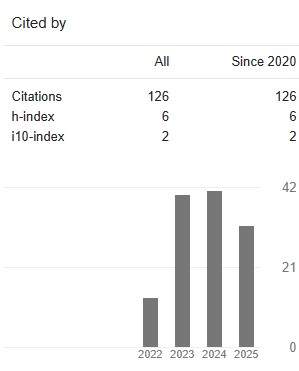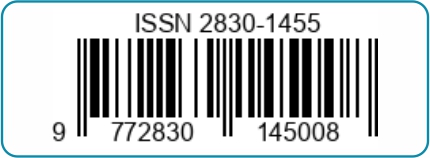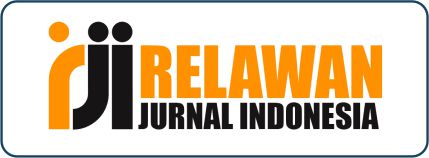Pemanfaatan Media Sosial Instagram sebagai Islamic Digital Marketing Promosi Lingerie pada Akun Wifeonly
The Utilization of Instagram Social Media as Islamic Digital Marketing for Lingerie Promotion on the Wifeonly Account
DOI:
https://doi.org/10.36701/al-khiyar.v5i1.1929Keywords:
Instagram, bisnis fashion, Lingerie.Abstract
Lingerie is a category of women's underwear that implies that it is attractive, fashionable or both. Lingerie is made of light, elastic, smooth, thin, or decorative fabrics such as silk, satin, spandex, chiffon or lace. Wifeonly is a brand owned by Meilia, an entrepreneur from Semarang who initially sold books but shifted to the underwear fashion business due to a continuous decline in book sales. Now wifeonly produces underwear & herbs such as panties, bras and lingerie. Uniquely the system that meilia builds in her business is a Syar'i system or Islamic marketing and makes Instagram the only media to sell her products. The theory used in this research is Islamic digital marketing. This study aims to find out the efforts and attention of business owners in applying the halal system to the products they sell even though their superior products are very vulnerable to being judged negatively in terms of the intended use. The method used in the research is field research, namely a research method that collects data directly in the field, involving observation, interviews, and documentation to understand phenomena in their original context. Now Wifeonly, whose business is rapidly on social media, has a follower of 40,600 people with a turnover of hundreds of millions per month, has answered questions and concerns of some parties about its business, especially the purpose and purpose of using its main product, namely lingerie. The results of the analysis that has been carried out that Wifeonly has implemented Islamic values from the Islamic digital marketing concept.
Downloads
References
Al-Ghazali. Ihya Ulumuddin, n.d.
Al-Quran. Surah Al-Baqarah:42. Yogyakara: UII Press, 1997.
Al-Quran. Surah Annahl:90. Yogyakara: UII Press, 1997.
Al-Quran. Surah Annur :31. Edisi Pert. Yogyakara: UII Press, 1997.
Al-Quran . Surah Al-Isra : 35. Yogyakara: UII Press, 1997.
Amin, Hanudin, Abdul Rahim Abdul-Rahman, and Dzuljastri Abdul Razak. “Theory of Islamic Consumer Behaviour: An Empirical Study of Consumer Behaviour of Islamic Mortgage in Malaysia.” Journal of Islamic Marketing 5, no. 2 (2014): 273–301. doi:10.1108/JIMA-06-2013-0042.
At-Tirmidzi, Sunan. HR. Tirmidzi No 1209, n.d.
Ath-Thabarani. “HR. Ahmad, Al-Musnad, Juz 5, No. 22391.” In Al-Mu’jam Al-Ausath, No. 5787, n.d.
Ekonomi, Jurnal, Vol No Juni, P Issn, and Makanan Halal. “Article Info” 13, no. 2 (2024).
Gods, Like. “Aesthetics Of,” 2019.
Gunawan, Imam. Metode Penelitian Kualitatif Teori & Praktik . (Jakarta: BUMI Aksara,2013). Edited by Suryani. Jakarta: Bumi Aksara, 2013.
Kamali, Mohammad hashim. MAQASID AL-SHARIAH, IJTIHAD AND CIVILISATIONAL RENEWAL. Joint Publication, 2012.
Letai, Anthony. “Citation for This Article.” The Journal of Clinical Investigation 115 (2648): 2648–55. http://www.jci.org.
Mukherjee, Koustav. “Comparision Between Social Communication Ethics and Social Media Communication Ethics: A Paradigm Shift.” Global Media Journal: Indian Edition 7/8, no. 2/1 (2016): 1–10. http://search.ebscohost.com/login.aspx?direct=true&db=ufh&AN=129781894&site=ehost-live.
Muslim, Shahih. “HR.Muslim.” In Kitab:Al-Buyu’, Buthlaan B., No.1513, n.d.
Naseri, Abbas, and Ezhar Tamam. “Impact of Islamic Religious Symbol in Producing.” The Public Administration and Social Policies Review I, no. 8 (2012): 61–77.
Nurkhalis, Nurkhalis. “Representasi Khilafah Dalam Pemerintahan Republik Spiritual.” AKADEMIKA: Jurnal Pemikiran Islam 23, no. 2 (2018): 283. doi:10.32332/akademika.v23i2.1109.
PURNAMA, D P. “Fakultas Dakwah Dan Komunikasi Universitas Islam Negeri Ar-Raniry Banda Aceh.” Core.Ac.Uk 69, no. Wim 69 (2021).
Qhardawi, Yusuf. Al-Halal Wal Haram Fil Islam. PT. Bina Ilmu, 1993.
Rahimahullah, Asy-Syaikh ’Abdul ’Aziz bin Abdillah bin Baz. “Kumpulan Fatwa Tentang Hukum Gambar Makhluk Bernyawa.” Https://Fawaaidwa.Blogspot.Com/, 2015. https://fawaaidwa.blogspot.com/2015/11/kumpulan-fatwa-tentang-hukum-gambar.html.
Rusyd, Ibnu. Bidayatul Mujtahid Wa Nihayatul Muqtashid. Kairo:Dar Al-Hadist, 2004.
Safitri, Junaidi. “Impact of Instagram Posts, Instagram Stories, and Instagram Reels on Brand Awareness of Muslim Clothing Brand Zombasic.” Journal of Islamic Economics Lariba 8, no. 2 (2022): 289–302.
Syafaruddin, Khairul, and Ni’matul Mahfiroh. “Komodifikasi Nilai Islam Dalam Fashion Muslim Di Instagram.” Profetika: Jurnal Studi Islam 21, no. 1 (2020): 8–16.
Syafril, Syafwendi, and M. Fuad Hadziq. “Islamic Principles in Marketing: An Overview of Islamic Marketing Mix in Social-Media Campaign.” El-Qish: Journal of Islamic Economics 1, no. 1 (2021): 69–82. doi:10.33830/elqish.v1i1.1568.2021.
Taimiyah, Ibnu. Al-Hisbah Fi Al-Islam. Kairo, n.d.













